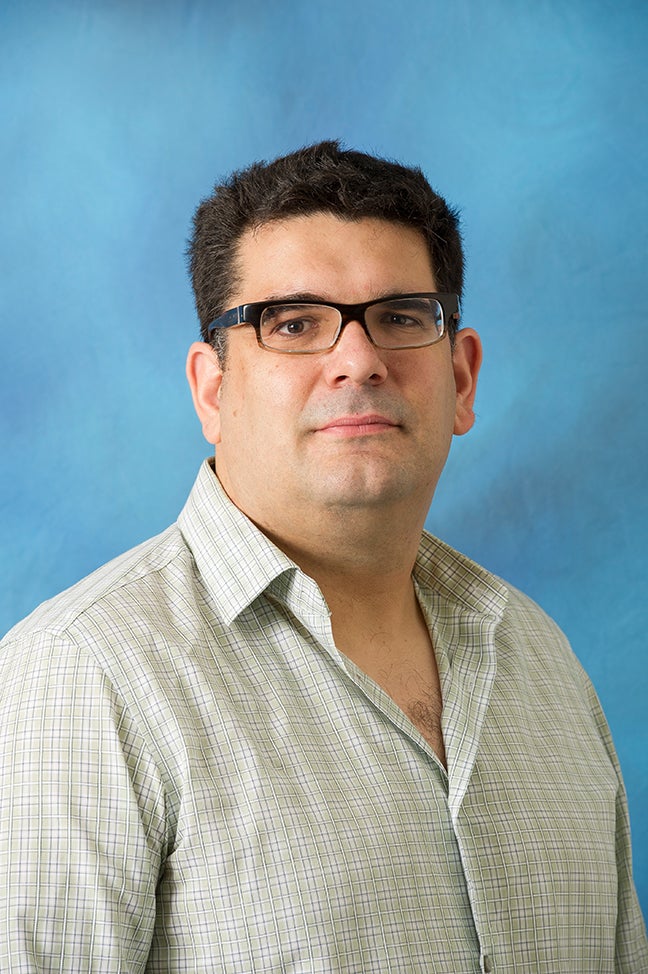Main
Chair's Message
In this Fall 2016 issue of By the Numb3rs you can read about recent developments in the Department of Mathematics as well as some accomplishments by our students and faculty. We are pleased to announce that the 2016 Edmund R. Michalik Distinguished Lecture in the Mathematical Sciences featured Professor J. Tinsley Oden of the Institute for Computational Engineering and Sciences at the University of Texas at Austin presenting a talk titled "Foundations of Predictive Computational Science: Selection and Validation of Models of Complex Systems in the Presence of Uncertainty".
Dr. Bard Ermentrout’ s Research on Visual Hallucination, is featured in the October 11, 2016 edition of eLife. Dr. Brent Doiron and Dr. Jon Rubin co-authored a research paper “The spatial structure of correlated neuronal variability”, published online by the journal Nature Neuroscience on October 31, 2016. Dr. Anna Vainchtein’s ongoing research in Nonlinear Waves in Nonintegrable Lattices has been funded by the National Science Foundation. There are several other new sponsored research projects, listed in the New Research area of the newsletter.
Two of our recent graduates, Dr. Soheil Malekzadeh and Dr. Woden Kusner, reminisce about their time here at the University of Pittsburgh, and tell us about their successes since graduation. We have featured our Math Club, with a story about how it has grown since inception and it continues to be a great student resource.
In our People section, please take time to get to know our new faculty members. We are pleased to announce that three of our staff members were acknowledged for their long term service to the Math Department at the recent Dietrich School of Arts and Sciences Annual Staff Award Recognition Luncheon.
As always, please keep in touch and fill in any exciting news you would like to share with us in the “Stay in Touch” section. We would love to hear from you. Visit our web page www.mathematics.pitt.edu for information on how to contact us and for the latest news about the Department.
Don’t Believe Your Eyes
Pitt researcher part of a team that discovers way to induce visual hallucinations
 Visual hallucinations … everyone has heard of them, and many people have experienced the sensation of “seeing” something that isn’t there. But studying the phenomenon of hallucinations is difficult: they are irregular, transitory, and highly personal—only the person experiencing the hallucination knows what he or she is seeing, and representations of what’s being seen are limited to verbal descriptions or drawings.
Visual hallucinations … everyone has heard of them, and many people have experienced the sensation of “seeing” something that isn’t there. But studying the phenomenon of hallucinations is difficult: they are irregular, transitory, and highly personal—only the person experiencing the hallucination knows what he or she is seeing, and representations of what’s being seen are limited to verbal descriptions or drawings.
A research team of Bard Ermentrout from the University of Pittsburgh’s Kenneth P. Dietrich School of Arts and Sciences and Joel Pearson from The University of New South Wales in Australia have come up with a way to create hallucinations that could make them easier to be studied objectively, potentially leading to new treatment methods. More>
Balancing Time and Space in the Brain: A New Model Holds Promise for Predicting Brain Dynamics
Study extends popular “balanced network theory”
Profs. Brent Doiron and Jonathan Rubin's Research
For as long as scientists have been listening in on the activity of the brain, they have been trying to understand the source of its noisy, apparently random,  activity. In the past 20 years, “balanced network theory” has emerged to explain this apparent randomness through a balance of excitation and inhibition in recurrently coupled networks of neurons. A team of scientists has extended the balanced model to provide deep and testable predictions linking brain circuits to brain activity.
activity. In the past 20 years, “balanced network theory” has emerged to explain this apparent randomness through a balance of excitation and inhibition in recurrently coupled networks of neurons. A team of scientists has extended the balanced model to provide deep and testable predictions linking brain circuits to brain activity.
Lead investigators at the University of Pittsburgh say the new model accurately explains experimental findings about the highly variable responses of neurons in the brains of living animals. On Oct. 31, their paper, “The spatial structure of correlated neuronal variability,” was published online by the journal Nature Neuroscience.
The new model provides a much richer understanding of how activity is coordinated between neurons in neural circuits. The model could be used in the future to discover neural “signatures” that predict brain activity associated with learning or disease, say the investigators.
“Normally, brain activity appears highly random and variable most of the time, which looks like a weird way to compute,” said Brent Doiron, associate professor of mathematics at Pitt, senior author on the paper, and a member of the University of Pittsburgh Brain Institute (UPBI). More>